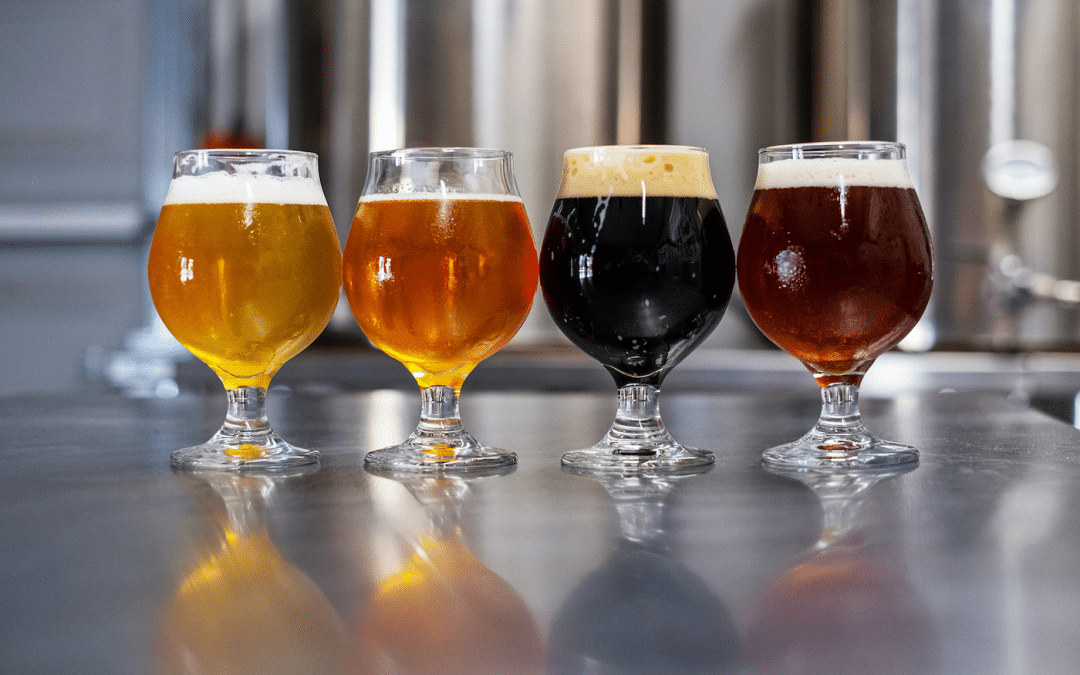Beer lovers know that brewers craft each of their beers to taste a particular way, whether that’s light and crisp or dark and smooth. Whatever it is, brewers prefer the people who drink that beer to have a taste experience as close as possible to their original intention. Keeping the beer cold helps preserve that “brewery fresh” taste as long as possible. According to Craft Beer USA, “A general rule of thumb for the brewing industry is that beer stored at 100°F for one-week tastes just as old as beer stored at 70°F for two months, or just as old as beer stored at 40°F for one year.” The reason beers change at higher temperatures is because of the chemical reactions taking place. Several members of the BeerAdvocate forum refer to the “Arrhenius equation,” which states that for every 18°F (10°C) increase in temperature, the chemical reaction rate doubles. One problem with the variations in taste of your beer is oxidation. Christopher Barnes explains this problem well on his popular blog I Think About Beer. He says,“No matter how hard brewers try, there is always some oxygen remaining inside the beer containers. Given time, that oxygen will ‘oxidize’ the beer creating the chemical Trans-2 Nonenal, also known as E-2 Nonenal, which is particularly prevalent in beers that have been way too warm for too long. This chemical creates the classic wet paper or cardboard aromas that signal ‘this beer is old.’ Keeping the beer cool will slow this process down.”
When keeping beer cold, it’s important to know how cold. The perfect temperature for storing beer can vary by the brew.
- 35° – 40°: Domestics
- This temperature is too low for most brews. The only beers that should be stored at this temperature are domestics like Bud and Coors. This temperature also works for non-alcoholic beers as well.
- 40° – 50°: Wheat Beers & Pilsners
- While this is still noticeably cold, it is best for light-bodied wheat beers and German pilsners that are meant to go down easy. This temperature is also good for craft beers with fruit flavors—think summer specials. You could also chill a pale lager to this level, but be careful not to go too cold or you might flatten out the complexity.
- 45° – 50°: IPAs & Lagers
- This is the best temperature window for most IPAs and Lagers. The colder the temperature, the more bitterness you’ll taste, but for an extra-hoppy flavor, you’ll want to serve on the warm end of this range.
- 45° – 55°: Porters & Stouts
- Porters and stouts usually present a balanced flavor profile that blend the bitterness of hops with the sweetness of malt. These brown beers also tend to have a higher alcohol content, which means you can store and serve them at higher temperatures than an IPA — but they should be well under room temperature.
- 50° – 55°: Sours & Bocks
- Ales should be served warmer than lagers to allow all their complexity to come through on the palate. This includes sour ales and bocks. They have an even higher alcohol content and can therefore stand up to storage at 55 degrees without off-flavors.
- 55° – 60°: Barleywines & Strong Ales
- High-alcohol beers like strong ales, imperial stouts and barleywines can last for years without much chill—it’s what they were designed to do in the days before refrigeration. They are best served just slightly under room temperature.
For those looking to store large amounts of craft beer, such as breweries, bars, taprooms, and taverns, there are several equipment options depending on the space you have available.
- Walk-in cold storage – Walk-in coolers can vary in size from just a small refrigerated box to a large room. These units have condensing units that can either be remote, as in stored on the roof of your building, or self-contained with a condensing unit stored directly on top of the cold room. Many of these units can also come with glass display doors and shelving to allow self-service.
- Reach-in coolers – Reach-in coolers have a much smaller footprint than walk-in units and are not permanent installations. These units can also come in undercounter styles that can allow for an even smaller footprint. This type of unit is best for applications where single-bottle or smaller quantity storage is needed. SPECS recommends True Manufacturing for your reach-in cooler brand.
- Kegerators – These units are similar to reach-in coolers, but have the added functionality of being able to hold one or multiple kegs of beer. They also have the ability to dispense the beer directly from the keg while still keeping the keg cool. Some of these units also offer additional reach-in cold storage for single cans or bottles.
While there are many equipment choices that may fit your application, the common ground they share is that all commercial machines require regular maintenance to keep them running. All commercial machines are recommended to be cleaned and maintained every 6 months to ensure that the unit reaches life expectancy. While some maintenance tasks are simple and can be done with ease, there are some procedures that a refrigeration technician is required to complete. SPECS has expert technicians that are able to perform all maintenance tasks and make any repairs needed. SPECS is also a licensed equipment dealer and can help source many types of equipment to fit your needs. Whether you are looking to purchase or install a new unit, or if you have an existing unit that needs service, we can help, so call SPECS today!


Recent Comments